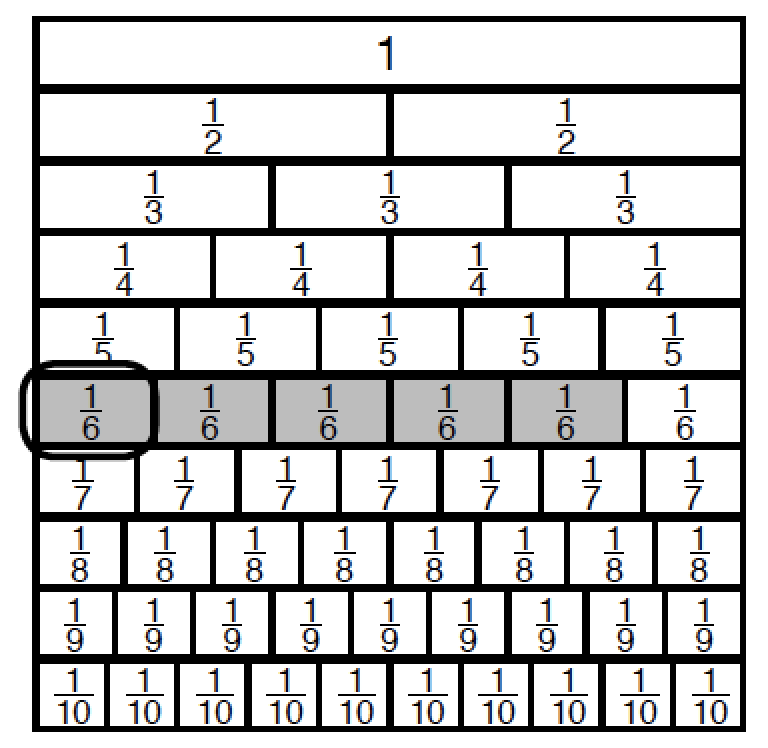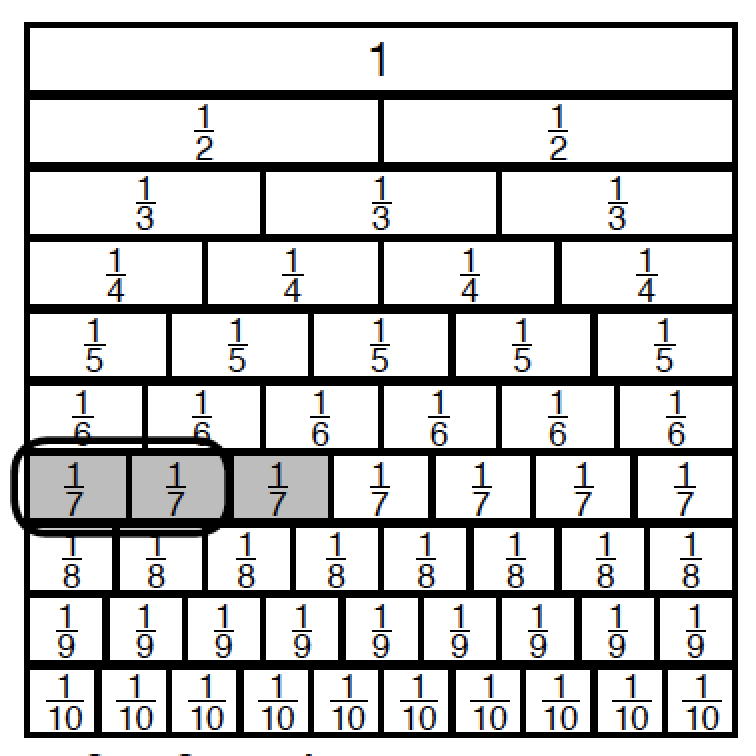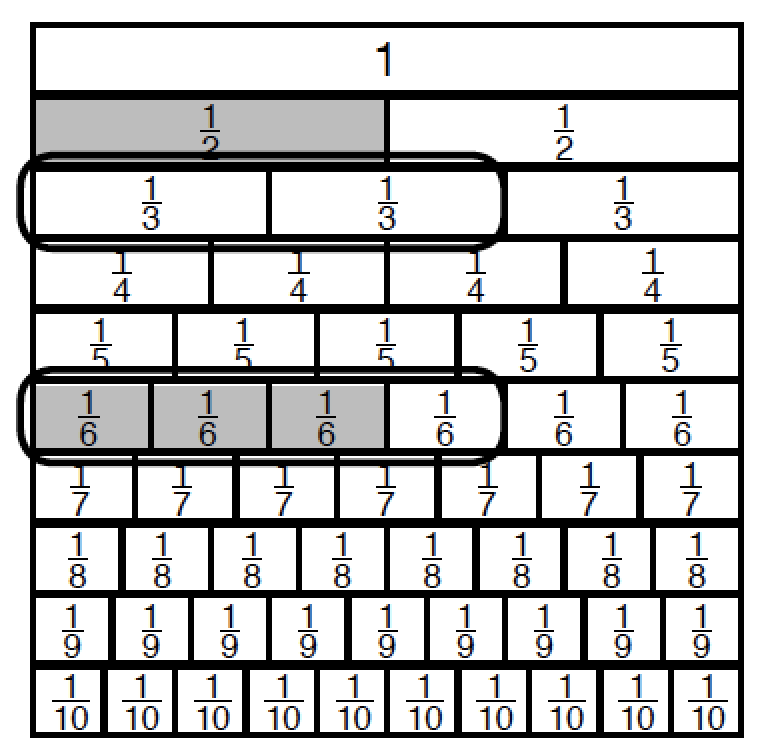Lesson 105 in RS2 Level F is titled Dividing Fractions on a Fraction Chart. This lesson is very critical to understanding division of fractions. Yes, when dividing fractions we are generally taught to just invert and multiply. But why? Why does this work? That’s what this lesson is all about. It’s setting up the pattern to make the discovery as to what dividing fraction is about.
Let’s start super easy. When we say 6 ÷ 2, what are we asking? We are asking how many 2s are in 6. There are 3 twos in 6.
So what about 5/6 ÷ 1/6? We’re asking the same; how many 1/6s are in 5/6. Look at the fraction chart. 5/6 is shaded and 1/6 is circled. So how many 1/6s are in 5/6? That’d be 5!


Yup. It’d be 1-1/2 times. The circled amount, 2/7, fits in the shaded amount, 3/7, one and a half times.
Let’s look at a harder one: 1/2 ÷ 2/3. Get the fraction chart out.

First, let’s look at what we’re asking when we say 1/2 ÷ 2/3. We want to know how many 2/3s are in 1/2. The 1/2 is identified by shading and 2/3 is circled.
So how many 2/3 will fit into 1/2? Just by looking, we can see that it’s going to be less than one, seeing that 2/3 is bigger than 1/2. The answer is more than 1/2 and less than one. Giving it an quick look, it appears to be 3/4.
Let’s find the common denominator to check our initial answer. This means 1/2 is the same as 3/6 and 2/3 is the same as 4/6. Ooooh. This makes it super easy now. Look at the chart.
Re-ask at the question again. What is 3/6 ÷ 4/6? Or, in other words, how many 4/6s fit into 3/6? Looking at the chart above with the 3/6 shaded and 4/6 circled, we can definitely see the answer is 3/4.
Yes, we can just invert and multiply, but this explains WHAT we are doing. Of course, you are only seeing a vignette of the situation. You’ll just have to look at the next lessons to see how this progresses…..
For those of you just wanting to review your fractions, check out the RightStart Fractions kit. Great activities for the summer to keep that math fresh!
